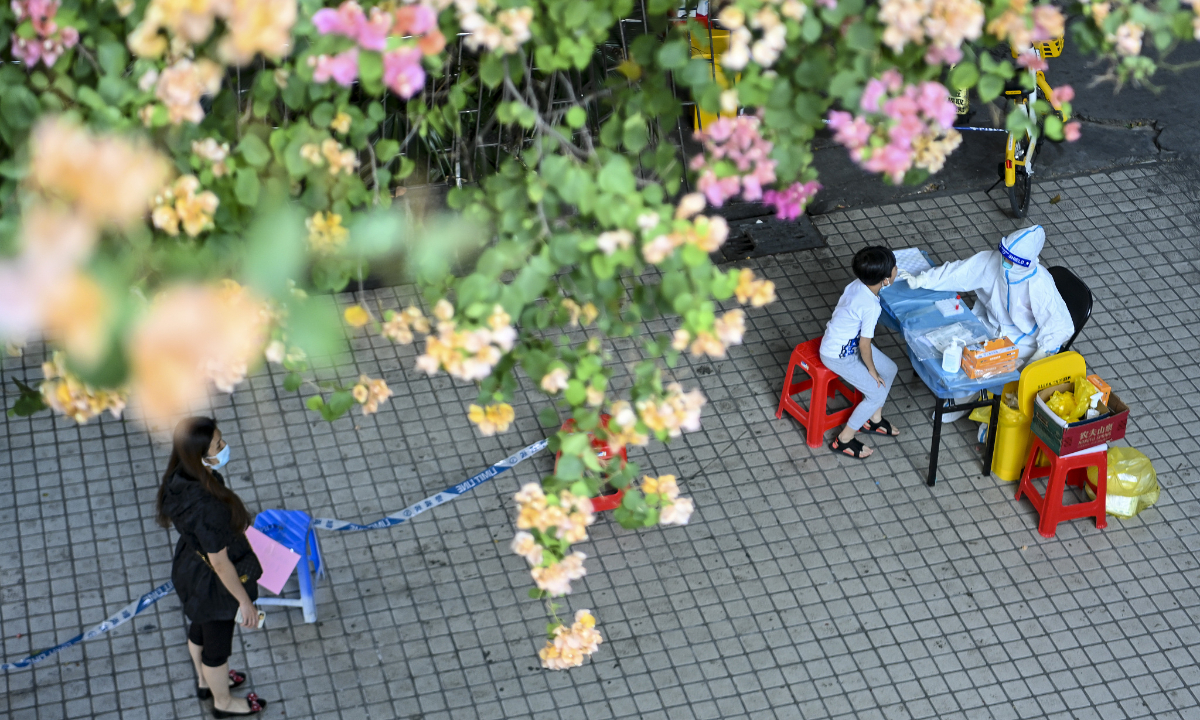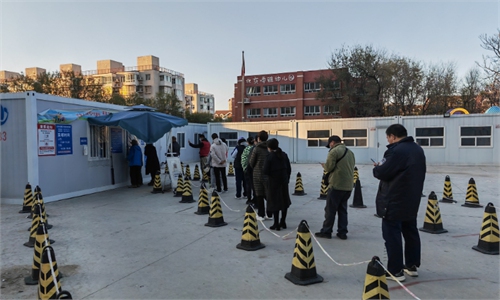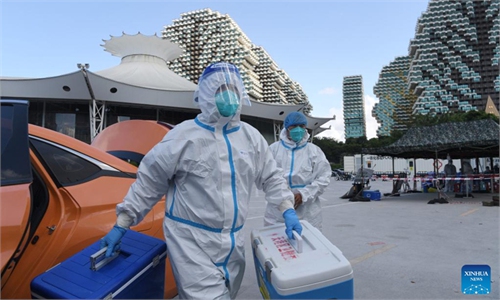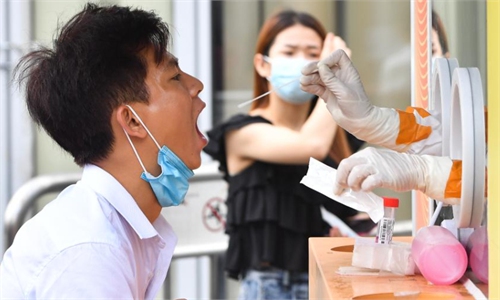China continues to optimize COVID-19 response, with some places stopping to provide free PCR tests

Residents take nucleic acid test of COVID-19 in Guangzhou, South China's Guangdong Province on October 29, 2022. Photo: VCG
Chinese cities have moved to optimize COVID-19 responses under the principle of “consistent strategy and flexible measures” based on the weaker Omicron strain with some areas stressing precision nucleic acid testing.
Zhuhai city, South China’s Guangdong Province, will conduct PCR tests which will be paid by the users starting Sunday. The PCR test will cost 2.5 yuan ($0.36) per person for polled samplings and 13 yuan for individual tests, according to a notice released by Zhuhai’s epidemic prevention and control headquarters.
The city has advised the residents not experiencing COVID-19 symptoms, or not working in high risk jobs to avoid PCR testing unless necessary.
Guiyang, capital city of Southwest China’s Guizhou Province, announced on Friday that for the residents not working in high risk jobs would be eligible for twice weekly free PCR tests, with additional tests to be done at the users’ own expense.
As of Sunday, dozens of Chinese cities have relaxed requirements for checking residents’ 48-hour COVID-19 PCR results for using public transit system, as they continue to optimize epidemic response under the principle of “consistent strategy and flexible measures.”
Some cities have also ended PCR test requirements for entering public venues as many other localities continued to optimize their epidemic responses over the weekend.
Officials from Southwest China’s Chongqing city said at a press conference on Saturday that city residents should not undergo PCR tests unless there is an essential need to do so, as the city has decided to remove earlier requirements for presenting negative PCR test results for entering residential communities that are not classed as high-risk, or using public transit system.
The changes came as the country is now facing a new situation in epidemic prevention and control as the pathogenicity of the Omicron variant significantly weakens.
The Xinhua News Agency published an editorial on Friday, calling on Chinese cities to readjust their prior measures on COVID-19 responses, and lessen the negative impact on economy and livelihood.



